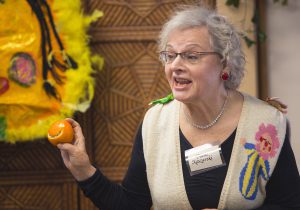By Dr. Joseph Chuman
When I was in elementary school, we were taught that America was a melting pot. Being melted in the pot was what being an American all was about. We even sang songs to the melting pot:
“You can get good milk from a brown skin cow,
The color of the skin don’t matter no how.”
This song was not first of all about respect for people of color; it was a paean to some purported homogenization. Somehow overlooked was the brute fact that by virtue of skin color blacks couldn’t be so homogenized. But even as a small kid I recognized that there was a disconnect in this lesson and its accompanying ditty. Having gone to school in Forest Hills, Queens, I don’t think at that time there were more than the smallest handful of African-American children enrolled in my school.
But the point here is the close identity of Americanism with the ideology of the melting pot. This ideology held the nation together from its origins until the late 1960s, when it was first challenged by the Black Power Movement. Assessing that the Civil Rights initiatives of the era, which essentially held up an integrationist ideal, were allegedly a failure, and asserting that while other peoples could assimilate to the American mainstream, African-Americans, by virtue of color could not, militant blacks asserted the integrity of their own racial identities, replete with distinctive modes of dress, a search for African roots, and their own self-help programs, a wing of the Black Panthers being the most visible.
The Black Power Movement, as small as it was, also set in motion a transformation of American society. It was the pioneer of what became the emergence of hyphenated Americans, whereby Americans identified themselves not generically as such, but with proud reference to their distinctive and more parochial backgrounds. It also unmasked the purportedly benign melting pot identity, which was fueled by the American Dream (work hard, play the game and you will make it here and become one of us), as being neither benign nor neutral, but rather an expression of Anglo-dominance.
It started with ethnicity. So we witnessed the emergence of Italo-Americans, Latino-Americans, and American Jews (making “American” adjectival to one’s Jewishness proclaimed a hierarchy of significance), etc. The movement incorporated sex and then gender. The Women’s Movement and female empowerment came of age in this period: and then the country saw the phenomenal rise of the LGBT movement.
In the politics of the New Left and the antecedent Old Left, putting such narrower identities front and center was seen as reactionary. Such concerns needed to be subordinated to a generic commitment to economic justice for all. Yet since the late 60s, people have been expressing their political interests through such identities and not despite them. So-called “identity politics” was born.
The melting pot didn’t disappear but was and is being severely challenged. Born out of its suppression was multiculturalism and an invigorated appreciation for the integrity of groups and their distinctive cultural expressions. “Tolerance” became its vaunted watchword. But multi-culturalism is a two-edged sword. First, it replaces negative stereotypes (not a bad thing) with positive stereotypes, but stereotypes nonetheless. By doing so, it commits the fallacies of essentialism and reduction. In other words, no culture is explicable on the basis of a few traits. All cultures are comprised of subcultures and individuals who hold to different values, sometimes starkly so. As my esteemed mentor, Cornel West, used to say, every culture is “radically hybrid.” While tolerance overall may be a good thing, extending tolerance to cultural groups is not without its problems. What if the group so tolerated is internally intolerant to its own minorities; homophobic, misogynistic, racist? This is a common reality and not an abstraction. Tolerance in this regard ends up in what should be construed as false tolerance. In short, there are practices that ought not to be tolerated.
A third problem with placing parochial identities up front is that it tends toward what the historian Arthur Schlesinger feared is the “disuniting of America.” If we cling first and foremost to the local group, what binds us together as a nation?
From the 1960s until the emergence of Trump, we could play around with that question. The American Idea and the melting pot ideology, despite its imperialism (or maybe because of it) had enough inertia to keep disunity at bay.
But now things have ominously changed. Identifiers that include race and ethnicity have grown more fierce. This impulse has now expanded to include political ideology as a badge of identification, and the lines between one political camp and the other have grown very thick. Deepened also are class divisions. People are divided and don’t talk to each other. But worse, the legitimacy of their standing as part of a single American nation is disregarded. In short, if another disagrees with you politically, it is not just that he is wrong. He has become an enemy. We are experiencing a strident tribalism, wherein political ideology in many cases has superseded loyalties of ethnic group and clan.
My own view is that our democracy is in greater danger than it has been in my lifetime, and the threat of the disunity of America (not as a geographical entity, but socially and democratically) is greater than at any time since the Civil War.
How are we to find a way beyond this? What needs to be done to save and restore our democracy and weaken the grip of tribal division? I have some ideas I want to share. But those ideas start with a vision of what a renewed American democracy would look like. Please join me for my talk of April 1, which I have entitled “Glorious Visions: An America Beyond Tribalism.”
Dr. Joseph Chuman is the leader of the Ethical Culture Society of Bergen County.


